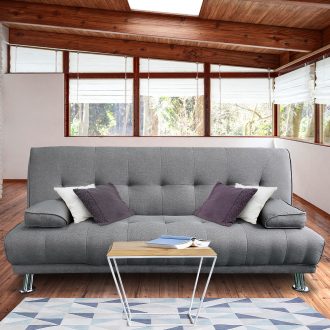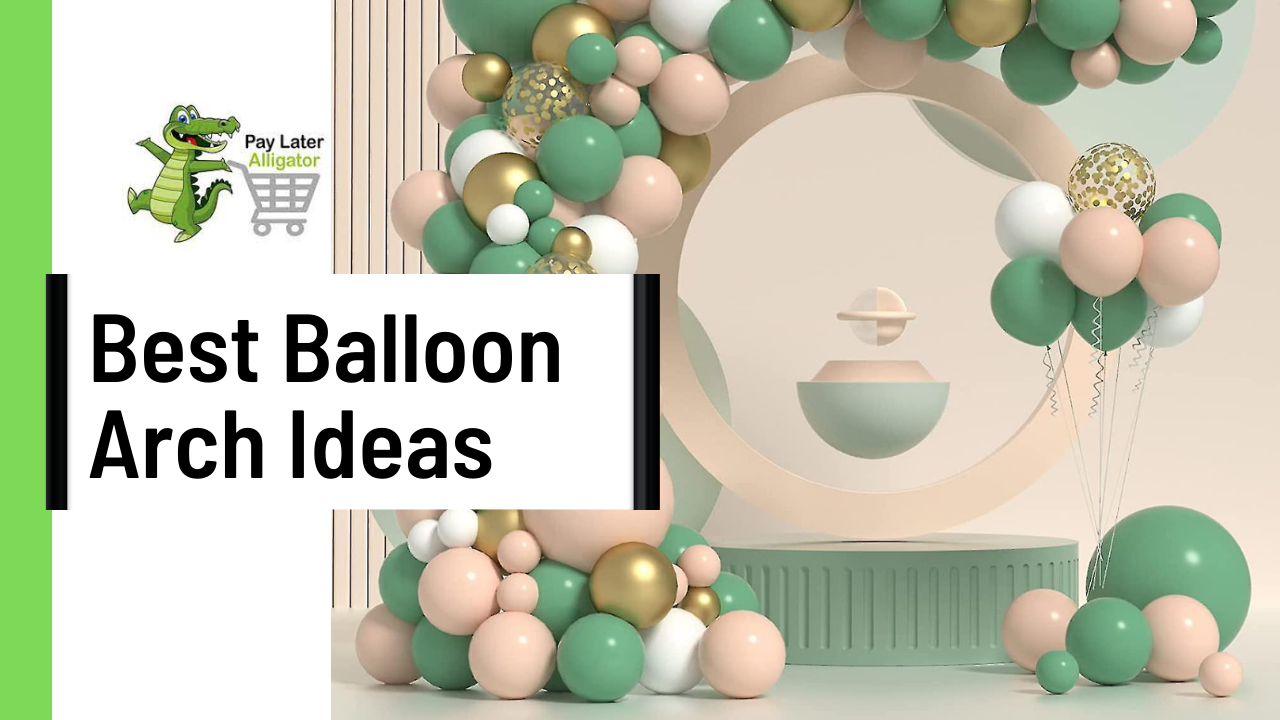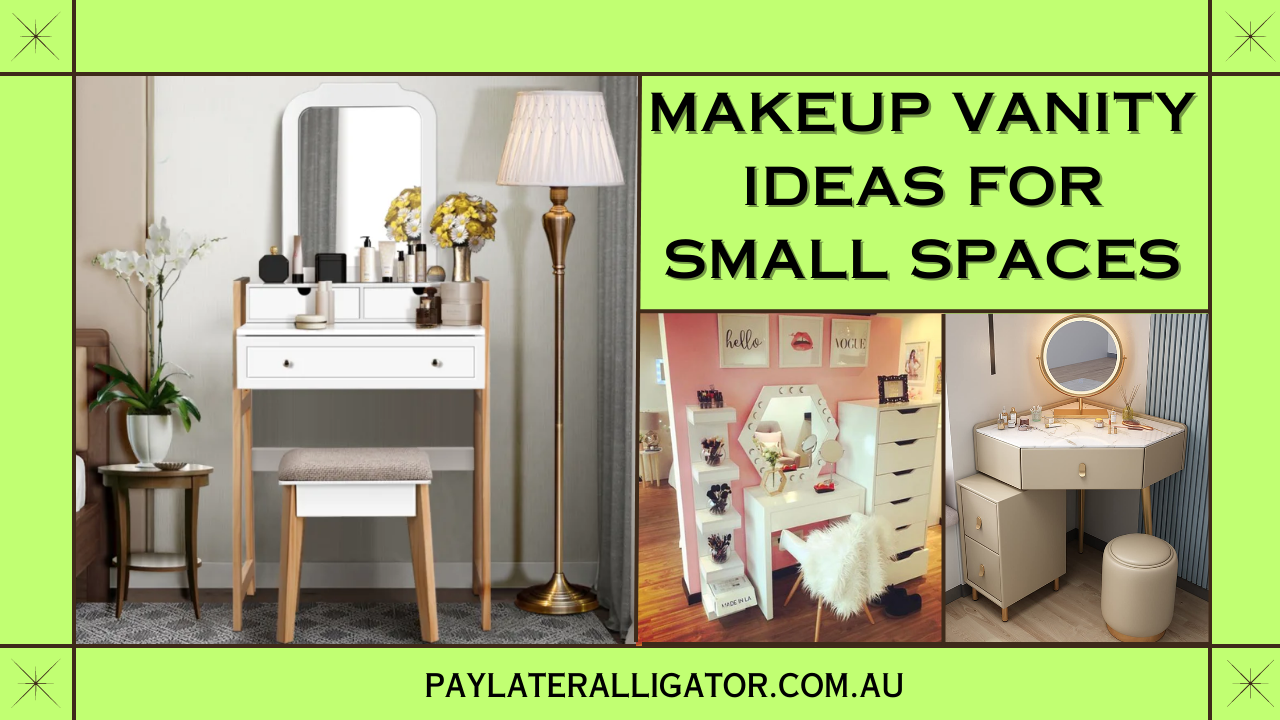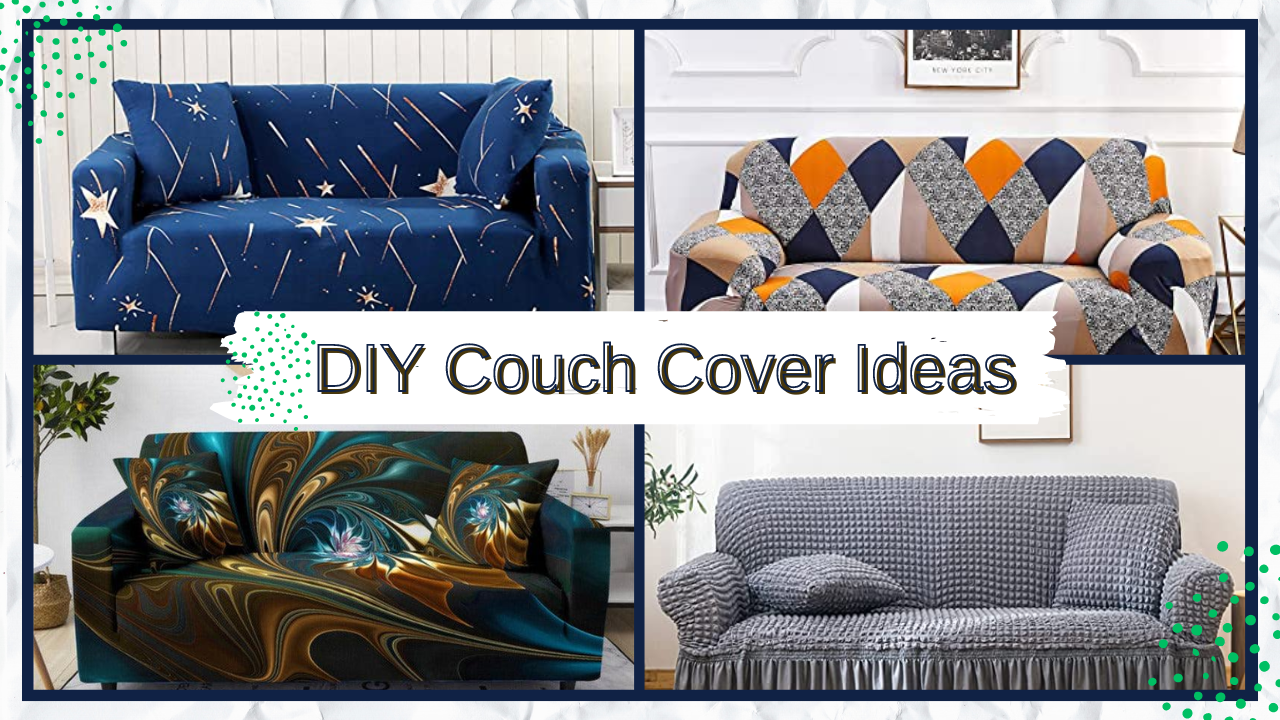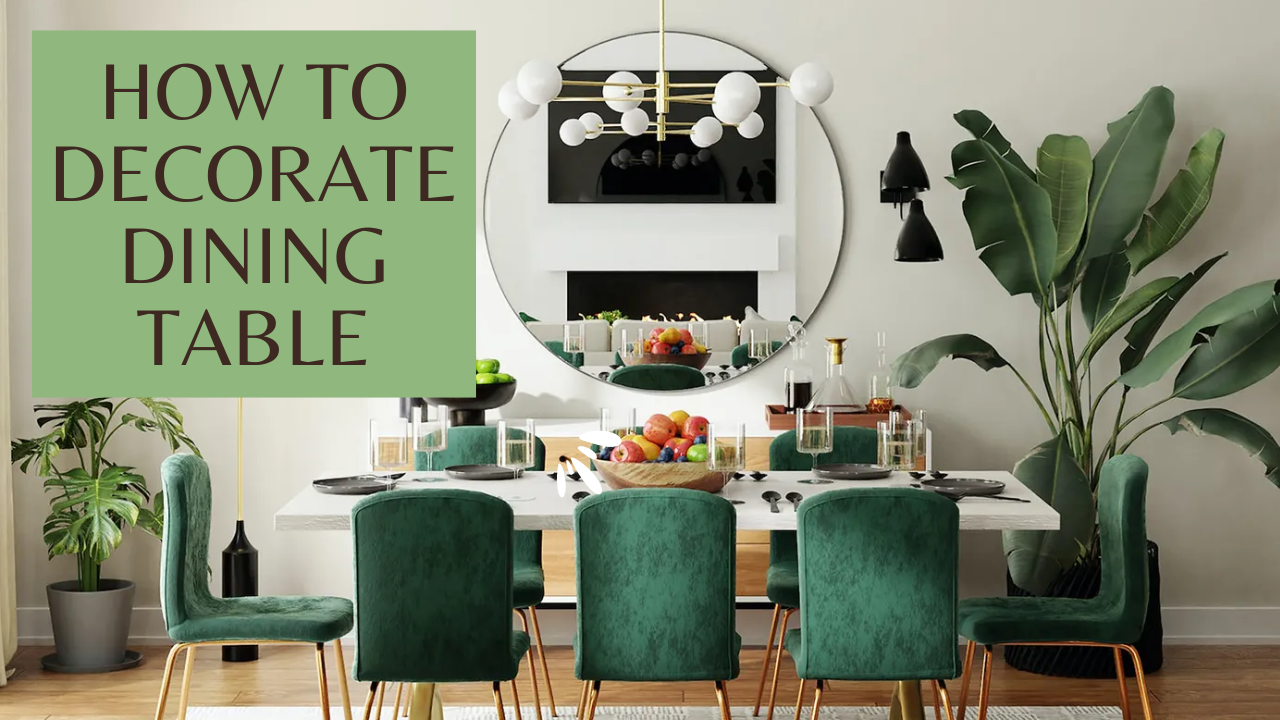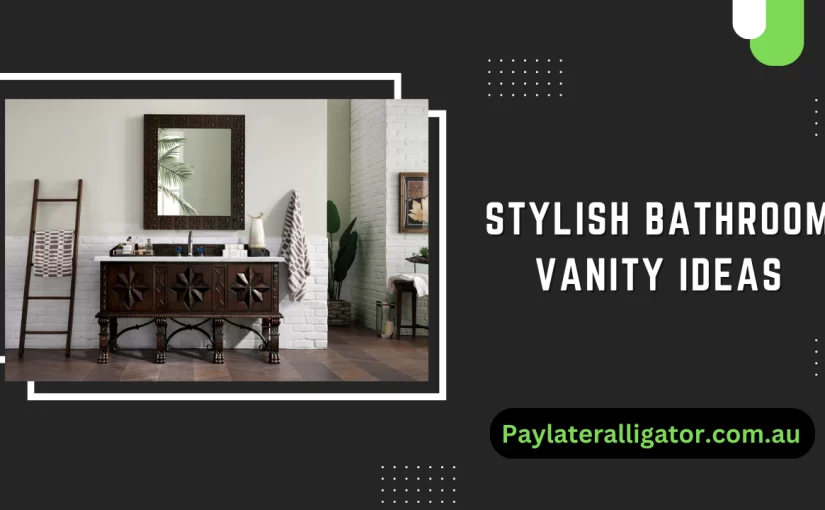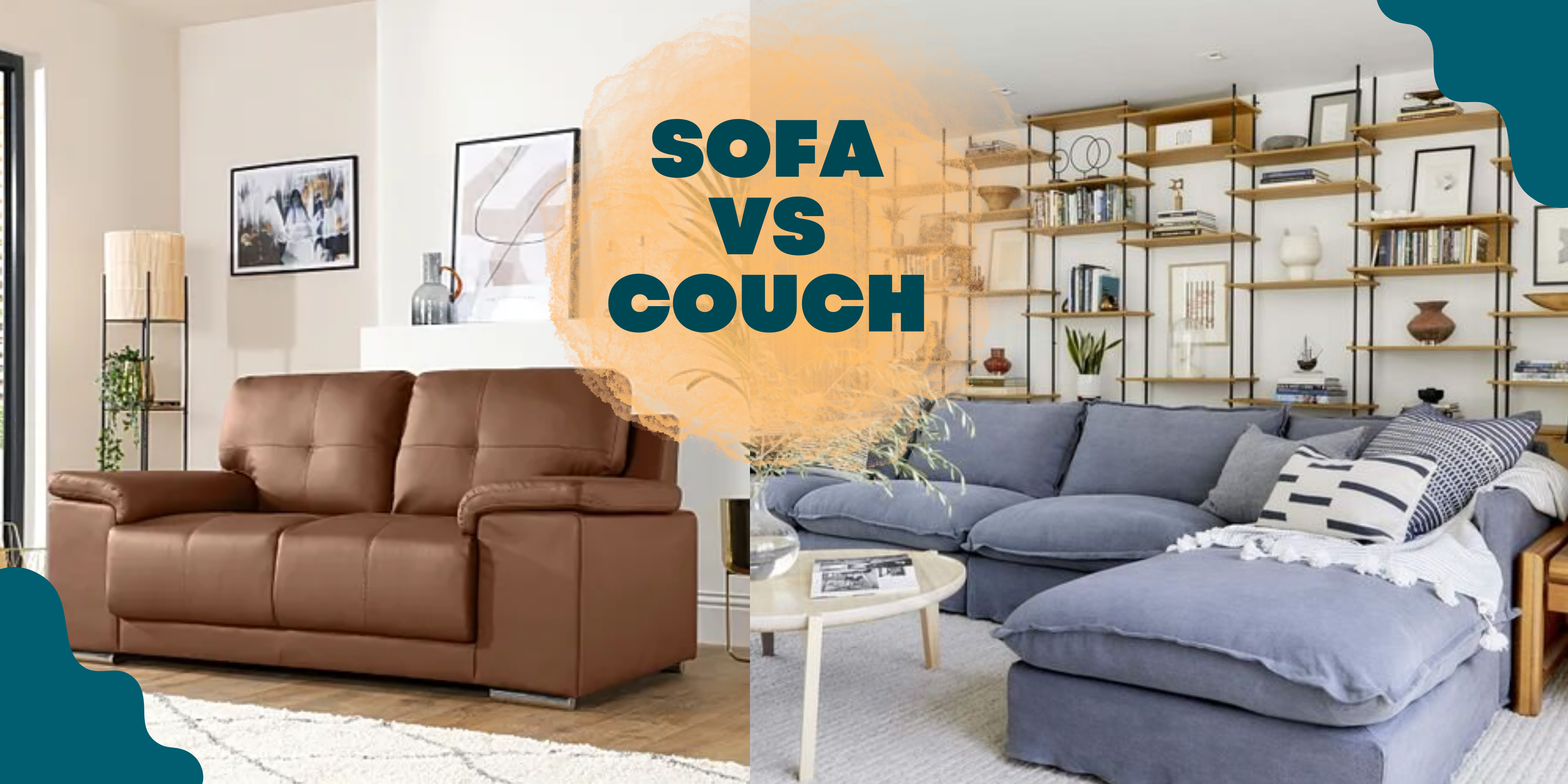
Battle of the Living Room: Sofa vs. Couch
The choice between a sofa and a couch is one that many homeowners face when furnishing their living rooms. Both options provide seating and can serve as a focal point in your space. However, there are several differences between the two that can impact your decision. In this blog post, we’ll compare the pros and cons of sofas and couches, considering factors like comfort, durability, and aesthetics, to help you determine the best option for your home.
Comfort
Sofa:
Sofas are typically designed with comfort in mind. They often feature plush cushions, padded armrests, and backrests that provide excellent support for sitting or lounging. Many sofas are available in a variety of configurations, including sectionals and chaise lounges, which can accommodate various seating preferences and postures. Additionally, sofas tend to be wider and deeper, allowing for more space to stretch out or curl up.
Couch:
Couches, on the other hand, generally have a more casual and informal appearance. They may have a lower backrest and thinner cushions, making them less suitable for extended periods of sitting or lounging. However, couches can still provide a comfortable seating option for shorter periods or more relaxed settings. Some couches also come with a built-in recliner or sleeper feature, which can be an added bonus for comfort and versatility.
Durability
Sofa:
Sofas are often built with more robust frames and high-quality materials, making them more durable and longer-lasting. They are designed to withstand regular use and can hold up well under the weight of multiple occupants. Additionally, many sofas come with removable cushion covers, making it easy to clean and maintain the upholstery.
Couch:
While couches can also be made with quality materials, they may not always have the same level of durability as sofas. Couches are typically lighter in construction, which can make them more susceptible to wear and tear over time. However, some couches are built with durability in mind, so it’s essential to research and choose a well-constructed model.
Aesthetics
Sofa:
Sofas often come in a wide range of styles, from traditional and classic designs to sleek and modern options. They can be found in various upholstery materials, such as leather, fabric, or velvet, and are available in numerous colours and patterns. This versatility allows you to find a sofa that complements your interior design style and personal preferences.
Couch:
Couches tend to lean towards a more casual and laid-back aesthetic. They are often associated with a relaxed, informal atmosphere and can be a great option for creating a cozy and welcoming living space. While couches may not offer the same level of design variety as sofas, they can still be found in many different materials, colours, and styles.
Functionality
Sofa Functionality :
Sofas are designed to accommodate multiple people comfortably and can provide ample seating for family gatherings or social events. Many sofa designs also offer additional functionality, such as built-in storage compartments or the ability to convert into a sofa bed.
Couch Functionality:
Couches can provide a more intimate and relaxed seating option, making them ideal for smaller spaces or rooms where a formal seating arrangement is not needed. Some couches also come with built-in recliners or sleepers, adding functionality to a compact and casual seating choice.
Price
Sofa:
In general, sofas tend to be more expensive than couches due to their larger size, more substantial construction, and the use of higher-quality materials. However, there is a wide range of price points available for sofas, from budget-friendly options to high-end luxury models.
Couch:
Couches can be more budget-friendly, making them a popular choice for those looking to furnish their living spaces without breaking the bank. However, it’s essential to remember that a lower price point may sometimes be an indicator of lower quality or durability. It’s important to research and finds a couch that strikes a balance between affordability and long-lasting value.
Size and Space
Sofa:
Sofas typically require more space due to their larger size and additional seating capacity. This makes them ideal for larger living rooms or open-concept spaces where they can be easily accommodated. However, for smaller rooms, a sofa may be too bulky or overpowering, making it difficult to create a balanced and functional layout.
Couch:
Couches are often smaller and more compact, making them a better option for smaller living spaces or apartments. They can be easily integrated into various room layouts without taking up too much space. Additionally, their casual and cozy nature can help create a more inviting atmosphere in smaller rooms.
Design Trends: Modern Sofas vs. Classic Couches
As we’ve explored the differences between sofas and couches in “Battle of the Living Room: Sofa vs. Couch,” it’s time to delve deeper into the design trends that shape these seating options. Now, let’s compare modern sofas and classic couches, highlighting the latest design trends for each and offering advice on incorporating them into your home decor. By understanding the unique characteristics of these styles, you can create a living space that reflects your personal taste and enhances your home’s aesthetic appeal.
Modern Sofas: Clean Lines and Minimalist Aesthetics
Design Features:
Modern sofas are characterized by clean lines, geometric shapes, and minimalist aesthetics. They often feature a low profile, slim arms, and sleek metal or wooden legs. Upholstery materials for modern sofas tend to be neutral and understated, with solid colours or subtle patterns being the most common choices. The overall design emphasizes simplicity, form, and function.
Incorporating Modern Sofas:
To incorporate a modern sofa into your living space, consider the following tips:
- Opt for neutral colours, such as white, grey, or black, to create a clean and cohesive look.
- Pair your modern sofa with minimalist accent pieces, such as a glass coffee table or a sleek floor lamp, to maintain a consistent design theme.
- Use bold accent colours or patterns in throw pillows, rugs, or wall art to add a pop of interest to the room without overwhelming the minimalist design.
Classic Couches: Timeless Elegance and Ornate Details
Design Features:
Classic couches are known for their timeless elegance and attention to detail. They often feature ornate woodwork, intricate carvings, or elegant rolled arms. The upholstery materials for classic couches can range from luxurious fabrics like velvet or silk to more traditional options like leather or linen. Rich colours, floral patterns, and elaborate designs are common features of classic couch upholstery.
Incorporating Classic Couches:
To incorporate a classic couch into your living space, consider the following tips:
- Choose a colour palette that complements the rich hues and patterns of the couch, such as deep blues, warm reds, or rich greens.
- Pair your classic couch with other traditional pieces, like a wooden coffee table, an antique sideboard, or an ornate chandelier, to create a cohesive and timeless design.
- Add layers of texture with throw pillows, blankets, and rugs to create a cosy and inviting atmosphere.
Mixing Modern Sofas and Classic Couches: Creating a Unique and Balanced Look
For those who want to combine the best of both worlds, mixing modern sofas and classic couches can create a unique and visually interesting living space. To achieve a balanced look, consider the following tips:
Choose a Unifying Element:
Select a unifying element that can tie the two styles together, such as a common colour, material, or pattern. This will help create a sense of cohesion and harmony in your living space.
Balance Proportions:
Ensure that the proportions of the modern and classic pieces are balanced. For example, if you have a large, ornate classic couch, consider pairing it with a sleek, minimalist modern sofa of a similar size. This will prevent either style from overpowering the other.
Use Transitional Pieces:
Incorporate transitional pieces that blend both modern and classic design elements. This could include a coffee table with a modern shape but a traditional finish, or an accent chair with a classic silhouette but modern upholstery. These pieces can serve as a bridge between the two styles and help create a seamless transition in your living space.
Also Read: How to Style a Coffee Table
Curate Accessories Carefully:
Choose accessories that complement both the modern and classic elements in your room. This can include a mix of modern and traditional artwork, throw pillows with both geometric and floral patterns, or a combination of sleek and ornate lighting fixtures.
Embrace Contrast:
Don’t be afraid to play with contrast in your living space. The juxtaposition of modern and classic elements can create visual interest and showcase your unique design sensibilities. For example, a modern sofa in a bold colour can look stunning against the backdrop of a classic, intricately carved wooden wall panel.
Whether you prefer the clean lines and minimalist aesthetics of modern sofas or the timeless elegance and ornate details of classic couches, understanding the design trends and characteristics of each style can help you create a living space that suits your taste and enhances your home’s overall appeal. By incorporating the tips mentioned above, you can successfully mix and match modern sofas with classic couches to create a unique, balanced, and visually stunning living room.
What is the main difference between a sofa and a couch?
The primary difference between a sofa and a couch lies in their design and function. Sofas are typically larger, more formal, and designed for comfort with plush cushions and padded armrests. Couches, on the other hand, are more casual, often smaller, and may feature thinner cushions and a lower backrest.
How can I choose between a modern sofa and a classic couch for my living room?
The choice between a modern sofa and a classic couch depends on your personal preferences, existing home decor, and the overall style you want to achieve in your living space. Modern sofas feature clean lines and minimalist aesthetics, while classic couches are characterized by timeless elegance and ornate details. Consider factors such as colour, material, and design elements when making your decision.
Can I mix and match modern sofas and classic couches in my living room?
Yes, you can mix and match modern sofas and classic couches to create a unique and visually interesting living space. To achieve a balanced look, consider using a unifying element, balancing proportions, incorporating transitional pieces, curating accessories carefully, and embracing contrast.
How can I determine the right size sofa or couch for my living room?
To determine the right size sofa or couch for your living room, consider the size and layout of the space, as well as the other furniture and design elements present. Measure the available space and ensure that the chosen seating option allows for adequate traffic flow and complements the overall room layout. Sofas are typically larger and more suitable for spacious living areas, while couches are more compact and ideal for smaller spaces.
How can I maintain the durability and appearance of my sofa or couch?
To maintain the durability and appearance of your sofa or couch, choose high-quality materials and construction, regularly clean and vacuum upholstery, and rotate and fluff cushions to prevent uneven wear. Additionally, protect your seating from direct sunlight to prevent fading, and promptly address any spills or stains to keep the upholstery looking fresh and well-maintained.
Conclusion
Throughout our exploration of sofas and couches in both the “Battle of the Living Room: Sofa vs. Couch” and “Design Trends: Modern Sofas vs. Classic Couches” blog posts, we’ve delved into the various factors that differentiate these seating options and discussed the design trends that shape them. The choice between a sofa and a couch, as well as deciding between modern and classic styles, ultimately depends on your personal preferences, budget, and the size and layout of your living space.
By considering factors such as comfort, durability, aesthetics, functionality, and size, you can make an informed decision on the perfect seating option for your home. Additionally, understanding the design trends and characteristics of modern and classic styles can help you incorporate these elements into your living space seamlessly, whether you choose to stick to one style or mix and match them for a unique and balanced look.
In conclusion, the art of choosing and styling sofas and couches lies in recognizing your needs, personal taste, and the characteristics of your living space. By doing so, you can create a comfortable, functional, and visually appealing living room that reflects your unique design sensibilities and enhances your home’s overall aesthetic appeal.
Product Added!
Product Removed
You must first login or create an account to add to a Wishlist



